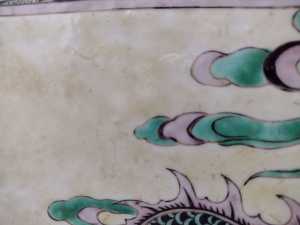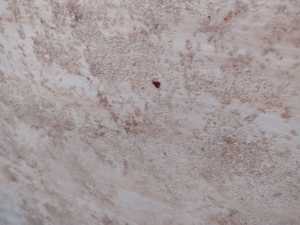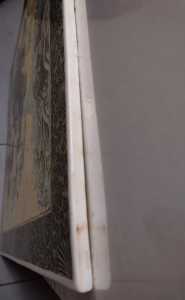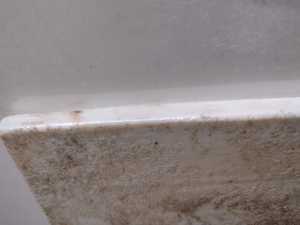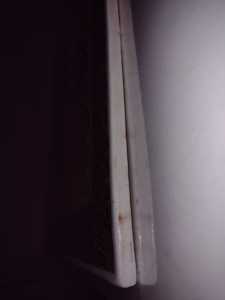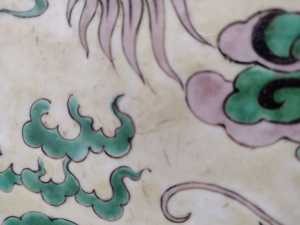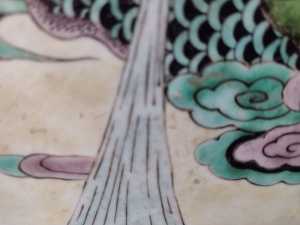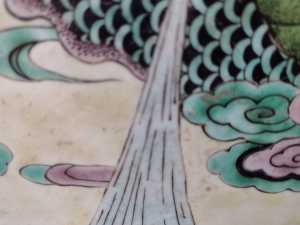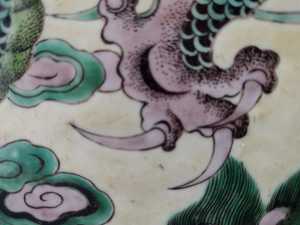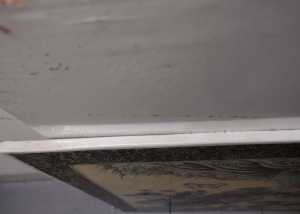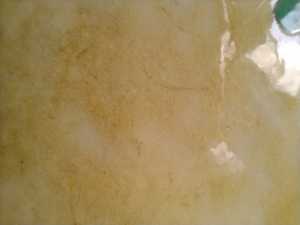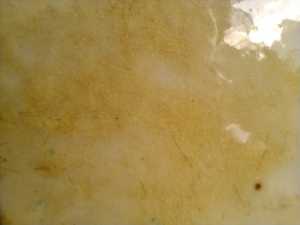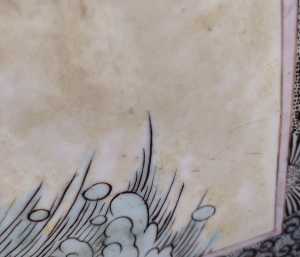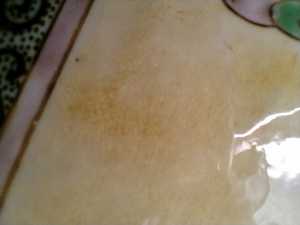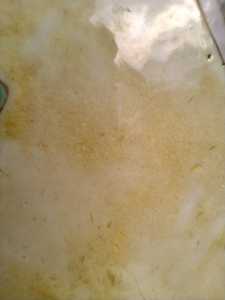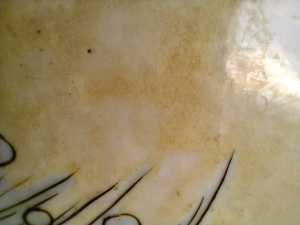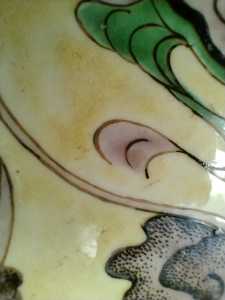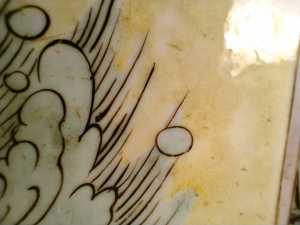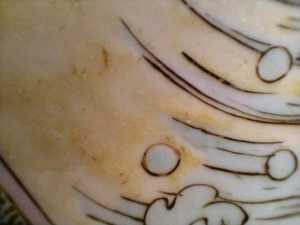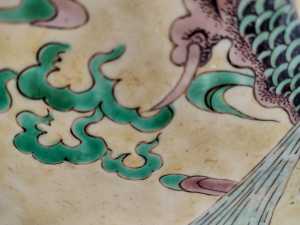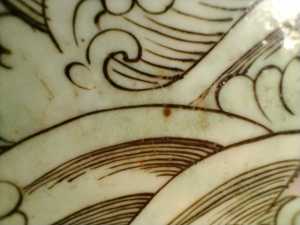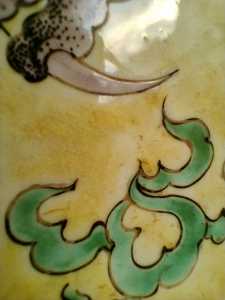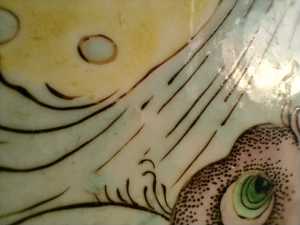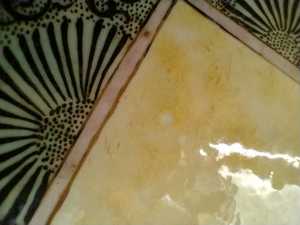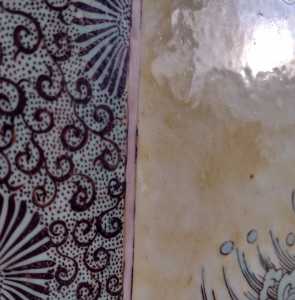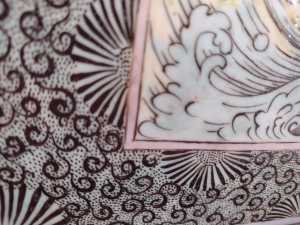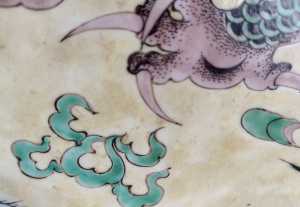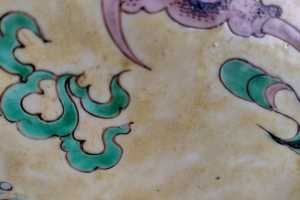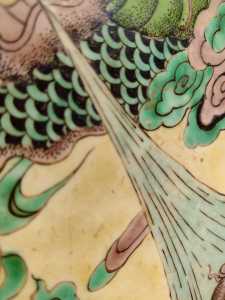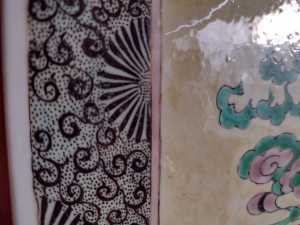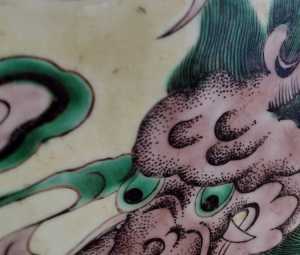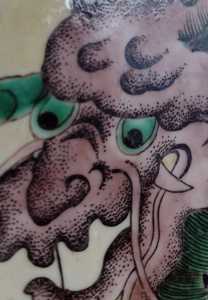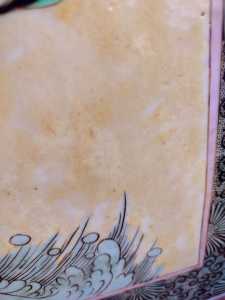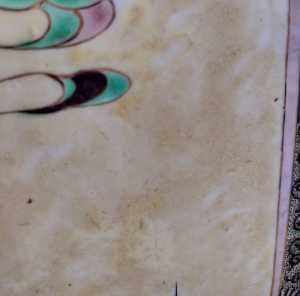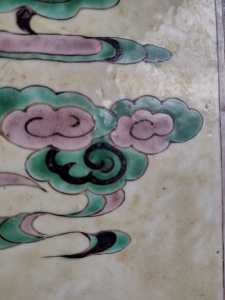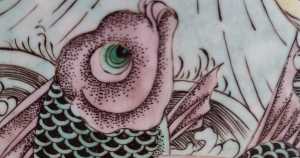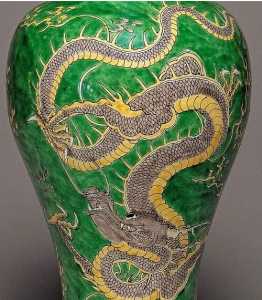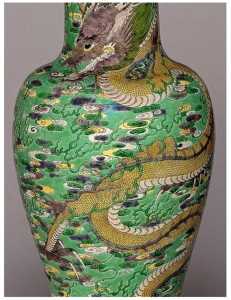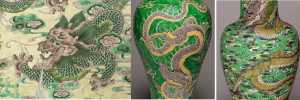The Chinese and Asian Art Forum. For Fans, Collectors and Dealers.
 Basic Rules For the BidAmount Asian Art Forum: Talk about whatever you want. You can even discuss and offer things that are for sale if they are authentic. Maximum image file size per post is 2 MB. Images of 700pxl x 700pxl are optimal if saved at a medium resolution. Be respectful of others and enjoy yourself. Click the YouTube link for a brief tutorial on using the forum. You can also EMBED Videos by cutting and pasting from You-Tube, Vimeo etc.
Basic Rules For the BidAmount Asian Art Forum: Talk about whatever you want. You can even discuss and offer things that are for sale if they are authentic. Maximum image file size per post is 2 MB. Images of 700pxl x 700pxl are optimal if saved at a medium resolution. Be respectful of others and enjoy yourself. Click the YouTube link for a brief tutorial on using the forum. You can also EMBED Videos by cutting and pasting from You-Tube, Vimeo etc.
NOTE: To post an item or add a new post, click open the category title from the FORUM LIST, and CLICK the Blue ADD TOPIC button.
@greeno107 Very nice bowls I do see the comparison. The supports is only one issue for me. The dragon is my artistic issue. Yes is a good looking dragon if we are talking about animation or a tattoo. But it is a wrong dragon for a Qing period example. I have not found one example of a dragon painted in this style. To clarify it’s on steroids. How can the scales be correct if the body is not. Is the head connected to the bicep or the neck. As all of the dragons I have shown on this thread none not one is painted in animation they are all proportional and stream lined. You never have to wonder where the neck starts and the tail ends. It’s a large plaque the dragon could have been positioned differently yes you can be a good artist but not an experienced artist cultural styles time and trends predict the stylization in terms of period.
It appears as thou the neck is behind the head like in this one:
https://www.sothebys.com/en/auctions/ecatalogue/2019/saturday-at-sothebys-n10115/lot.1537.html
but not visible as in the similar to this one:
http://www.alaintruong.com/archives/2016/09/06/34290832.html
In other words the head is obscuring the neck. So I don't see an issue with how the head is attached.
The back also look good for this period. In line with wood fired kiln.
Hi Mark,
Do you still stand by what you said above in relation to the back of the Plaque? It is a large plaque at 44.5cm square..
Hi Thomas,
This is a very interesting thread.
I first thought it was highly probable that your dragon plaque was from the guangxu period.
However of concern is the size and edges. I completely agree with @Greeno107 comments.
I do not share the same sentiment sadly with Giovanni post about the Wang Yeting plaque from Rob Michels auction. That one is definitely not by the master. It's a relatively new plaque.
Mark
@imperialfinegems , @Greeno107
Ok thanks guys.. I've taken some more photos of the edges and back. The edges aren't straight, they are warped at the edges and in the middle sections in places, also the back has this residue.. The front of the plaque also has a lot of residue of something (I don't know what) mixed in with the paint. I don't know if this helps, but here are the pics..
@thomasumjohnson The additional photos are still kind of dark... you should use very strong light, regardless of shadows and reflection, because the strong light allows your camera to use higher resolution which allows me (and others) to zoom in and see micro details, like bubbles, texture, etc...
That said, my mind is not changed. The quality of the rendering is really good... it's a beautiful plaque, and I don't think you over paid. But, the style (as Brian has pointed out) is not Guangxu, having a more cartoonish manner to its rendering.
This is a very important point to always keep in mind when buying. You should be asking yourself, "self, does the motif reflect the style of the period made?'
Those that best represent the taste of the period made, presumably mark & period pieces, will always be more desirable among collectors, and consequently have more monetary value.
Conversely, if collectors feel the design does not capture the style of the period, then even with irrefutable evidence of the piece being of the period, you will have an uphill battle trying to convince collectors of its authenticity, never mind its monetary value.
In this case, the design and the construction of the plaque leads to only one conclusion... not Guangxu period.
One more thing.... Brian's description of the rendering as being somewhat cartoon like, reminded me that I have another pair of famille verte vases from the 1970's-80's of very good quality that exhibit this cartoonish late 19th c. style. I'll post photos later, and I think you will see that the high quality of your plaque's rendering is not prohibitive of being from a later 20th c. date.
Dear Thomas thank you for the photos I am more confident that this piece is modern. I don’t like to use the word to deceive but can’t be ruled out now. Why have I come to this conclusion is the back. I couldn’t understand the finish edges or the kiln grit but your photos have given me the answer. It was done to cover the modern tooling marks if you get a magnifying glass you will clearly see what I’m referring to. The wear on the front looks very intentional. I believe this plaque was made in Hong Kong due the the watery darkened yellow enamel. The pictures are not clear enough to be definitive but the tooling marks are present.
@lotusblack Hi Brian,
Here are some detailed photos of the texture of the enamel. It has a texture of a sort of burnt sugar... Is this genuine age or simulation. And how do you know / how can you tell.. sorry lots of photos...
Hello, Thomas
If’s you want to know for sure let Peter check it out or do like I did and got with Victoria and Albert Museum and got there vu on a pare of picking jar I have they put them in the early 19th century. Best of luck to you John
@lotusblack Sorry Brian, I didn't mean to sound unappreciative of your knowledge / insights. I hope the additional photos help. The thing I don't understand thou, is that, if it was made to deceive then why paint it in a style that is out of touch with tradition, and go to a lot of trouble, since we all agree this took some time to render. To me it feel like an original piece in the way that the artist has created what we seem to all agree is an original work, which is why its hard to place it at a specific time. All be it likely not that old, since the style somewhat "modern" how modern I don't know, but it would be easier to copy a traditional style, being that the artist is or was very talented and it would have been a lot easier to do that then come up with an original work...
@thomasumjohnson I own a yellow enamel bowl that was described as Guangxu and had Christie’s look at it for authentication. The gentleman told me it was a copy from Hong Kong. He said he could alway tell it was Hong Kong due to the browning in the yellow enamel used and the sandy texture. It was my first expensive fake. I kept the bowl for study If I wasn’t at my other home I would send a photo. The covering of the tooling and artificial aging is done to make it look older than it really is. If they didn’t artificially age the plaque or intentionally cover up the tooling marks it would be ok. John is right I am no expert you should also get an expert opinion and than another tell they your concerns and what makes you feel good about it. Fakes are amazingly good sometimes not even experts can be conclusive without personal handling the item.
@lotusblack Ok Thanks Brian, for taking the time to share your knowledge.. You're more of an expert than I am..
In terms of style, I think the animated dragon is closer to a Kangxi style than late c19 early 20th thou. Like these ones that I mentioned in the beginning of the thread.. (I'm not saying my piece is Kangxi..!)
https://plcombs.blogspot.com/2014/11/kangxi-famille-verte-porcelain.html
But these manga style animated dragon that look modern did exist in the Kangxi period..
http://elogedelart.canalblog.com/archives/2011/04/23/20961315.html
and this one has the scales going in the opposite direction..
https://www.christies.com/en/lot/lot-5942789
You think your dragon resembles these amazing Kangxi examples? Perhaps in the most non-specific way, but they look miles apart to me when put side by side.
We can not cherry pick only the aspects of the piece that are similar....authenticity requires 100% match of aspects. A true marriage.
I think the facts have been laid out reasonably, so we are bordering on fantasy with these type of comparisons.
@thomasumjohnson I think you are actually answering your own questions I agree the animation of dragon was more pronounced in Ming early Qing. Start by eliminating the obvious did Kangxi dragons have green eyes are the clouds right. Is the enamel and glaze correct. We’re large plaques around. Is the structure correct. Not Quite. Than you have to move to revival. Ask the same thing. Not one thing makes it correct but the overall presentation. There are exceptions to every rule. That’s why some pieces just have to be handled we don’t see everything you do. The glaze and enamels could look different so we have to look at tells and rendering and take a guess. And still might not be correct. This forum is not to authenticate its to discuss the probability it is or isn’t. I look at this forum as a meter from 1 to 10 1 being no way to 10 yes its most likely correct. When I look at your plaque I see a lot of things from different periods not just one.
@lotusblack Yes I'm not saying it's kanxi, but Kangxi style. I'm saying that the 3 dimensional quantities and cartoon manga style rendition of dragons is more Kangxi than 19c 20c.. There does seem to be a large variety of styles of dragons within the Kangxi period, and I'd love to think my piece is Kangxi, but it's really a huge long shot in the dark and I'm fully aware of the bias that my opinion holds over trying to objectively appraise my own pieces. As pre-mentioned I am no expert and not qualified to make the call. But I'm just questioning previous statements relating to the dragon being too 3 dimensional, too cartoonish by sharing some other examples that also share similar qualities. Including the questions that people were asking about where the head was attached and scales moving in the opposite direction.. I need to have it looked at by an expert. Nevertheless I love the piece and happy I bought it, for whatever it is.
Thanks for visiting "The BidAmount Asian Art Forum | Chinese Art"
If you sell on eBay, or have a shop feel free to post images and descriptions and links.
Check back often for discussion about the latest news in the Chinese art and antique world. Also find out about the latest Asian art auctions at Sotheby's, Christie's, Bonhams and Tajans.
Auction results for: fine porcelain, ceramics, bronze, jade, textiles and scholar's objects. As well as Japanese, Thai, Vietnamese and other Asian cultures.
Thank you,
Peter Combs
Topics and categories on The BidAmount Asian Art Forum | Chinese Art
Kangxi vases, Kangxi dishes and chargers, Kangxi ritual pieces, Kangxi scholar's objects, Qianlong famille rose, Qianlong enamels, Qianlong period paintings, Qianlong Emporer's court, Fine porcelain of the Yongzheng period. Chinese imperial art, Ming porcelain including Jiajing, Wanli, Xuande, Chenghua as well as Ming jades and bronzes.
The BidAmount Asian Art Forum | Chinese Art
A free Asian art discussion board and Asian art message board for dealers and collectors of art and antiques from China, Japan, Korea, Thailand, Cambodia, Vietnam and the rest of Asia. Linked to all of the BidAmount Asian art reference areas, with videos from plcombs Asian Art and Bidamount on YouTube. Sign up also for the weekly BidAmount newsletter and catalogs of active eBay listing of Chinese porcelain, bronze, jades, robes, and paintings.
The art of calligraphy - and for the ancient Chinese it certainly was an art - aimed to demonstrate superior control and skill using brush and ink. Calligraphy established itself as one of the major Chinese art forms during the Han dynasty (206 BCE - 220 CE), and for two millennia after, all educated men were expected to be proficient at it.
The Museum’s collections of Asian art span nearly five millennia and encompass the cultures of China, the Himalayas, India, Japan, Korea, and Southeast Asia. In 2007, the Museum launched an initiative to create dedicated galleries for the collection, beginning with a gallery for the arts of Korea ...
Chinese art is full of symbolism, in that artists typically seek to depict some aspect of a totality of which they are intuitively aware.
China Online Museum is the finest online museum of Chinese art. It features Chinese calligraphy, painting, ceramics, bronzes, carving, and other artworks.
Chinese Ceramics & Works of Art. Overview Upcoming auctions Contacts Auction results ... Christie’s sales of Chinese ceramics and works of art showcase centuries of Chinese history. Held throughout the year in London, New York, Paris and Hong Kong, they attract a wide audience of collectors and connoisseurs vying for pieces as diverse as ...
Explore Asian Art Week. Contact the Specialist Department. Chinese Paintings ... Senior Specialist, Head of Sale. [email protected]. Tel:+1 212 641 5760. Bid in-person or online for the upcoming auction:Fine Chinese Paintings on 10 September 2019 at New York. Bid in-person or online for the upcoming auction:Fine Chinese Paintings on 10 ...
Discover an abundance of must-see art from all corners of a vast continent at Christie’s NY Asian Art Week. From contemporary classical and Chinese paintings to works with exemplary provenance from the Art Institute of Chicago, our Rockefeller Paza galleries will be full of ancient treasures and contemporary masterworks in a salute to the vibrant arts of Asia.
Sold to benefit The Art Institute of Chicago’s Asian Art Acquisition Fund, the sale features 84 lots with a focus on Ming and Qing porcelains, and offers a rare insight into the taste for collecting Chinese ceramics and works of art in the Midwest from the end of the 19th century through the 1980s. Highlights include two Wanli wucai garlic-head vases, a Qianlong mark and period, blue and ...
Specialist, Chinese Paintings, Christie's London Dr Malcolm McNeill is a Specialist in Chinese Paintings at Christie’s, based in London. He previously worked as an assistant curator of the Chinese collections and the Victoria and Albert Museum in London, as a researcher at the British Museum, and as a translator and tour guide at the National Palace Museum in Taipei.
The Christie's Education 2020 Conference: The Chinese Art Market 18 Jun 2019 Christie’s Education is delighted to announce our first international academic conference in Asia which will take place in Hong Kong from 26-27 November 2020 at the Hong Kong Convention and Exhibition Centre and will run in parallel with Christie’s Hong Kong Autumn Auctions.
The summer Chinese Art sale in Hong Kong will feature works of art from several private collections, including Qing porcelains and textile from the collection of the legendary Chinese art dealer A. W. Bahr (1877–1959), fine gilt bronze Buddhist sculptures from an old Hong Kong collection, an East Asian collection of Qing dynasty wine cups and jades, and a Japanese collection of Song ceramics ...
Sotheby's Chinese Works of Art Department holds two auctions each year in London, New York, Hong Kong and Paris.
Chinese Art - View Auction details, bid, buy and collect the various artworks at Sothebys Art Auction House.
With more than 340 Chinese works of art dating from the Neolithic to the Republic periods, highlights of this sale include a selection of Qing Imperial monochromes from the collection of Arnold and Blema Steinberg, early ceramics from the Art Institute of Chicago and Chinese porcelain and works of art from the collection of Henry Arnhold.
Results: Sotheby's Asia Week achieved $52.4 million in six strong auctions, exceeding pre-sale estimates. With 76.5% of lots sold and 60.3% of lots surpassing high estimates, the Asian art sales at Sotheby's indicate continued collector interest in the finest works of art from China, India and and the Himalayas.
Today's sale of Important Chinese Art will proceed as planned with sessions at 10 AM and 2 PM EDT. Sotheby's will be monitoring the weather conditions throughout the day and will be available to coordinate alternative bidding options should conditions make it difficult for clients to attend the auction in person.
Bonhams Chinese Art department is renowned for offering the finest works of art representing the richness and breadth of China's artistic heritage, particularly Imperial porcelain, white and spinach green jades, cloisonné and Buddhist art. Specialised international auctions are held globally, including London, Hong Kong and San Francisco.
Bonhams : Chinese Works of Art We use cookies to remember choices you make on functionality and personal features to enhance your experience to our site. By continuing to use our site you consent to the use of cookies. Please refer to our privacy and cookie policies for more information.
Bonhams Fine Art Auctioneers & Valuers: auctioneers of art, pictures, collectables and motor cars. We use cookies to remember choices you make on functionality and personal features to enhance your experience to our site. By continuing to use our site you consent to the use of cookies. ... Chinese Art (US) General enquiries
Bonhams : Fine Chinese Art We use cookies to remember choices you make on functionality and personal features to enhance your experience to our site. By continuing to use our site you consent to the use of cookies. Please refer to our privacy and cookie policies for more information.
Bonhams Fine Art Auctioneers & Valuers: auctioneers of art, pictures, collectables and motor cars Bonhams : Asian Art We use cookies to remember choices you make on functionality and personal features to enhance your experience to our site.
Bonhams are international auctioneers of fine Chinese and Japanese art. We specialise in rare Imperial and Export Chinese ceramics and works of art, as well as Japanese ceramics, fine and decorative works of art from the Neolithic Period to the 20th century. View on map
Bonhams Fine Art Auctioneers & Valuers: auctioneers of art, pictures, collectables and motor cars. We use cookies to remember choices you make on functionality and personal features to enhance your experience to our site. By continuing to use our site you consent to the use of cookies. ... Asian Art Bonhams. Work. 22 Queen St.
